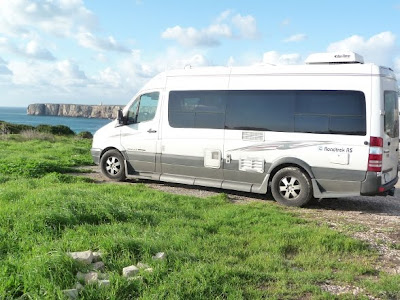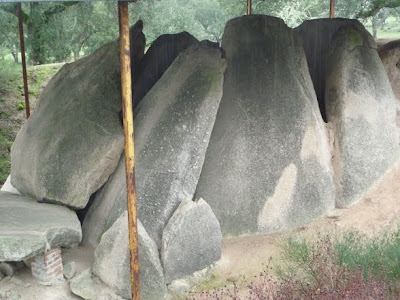We drove on south and west, ending where the road ends, at Sagres. It is an important place for a couple of reasons. The ancients regarded Sagres, the peninsula's land's end, as indeed the end of the world. The Romans held it to be sacred (sagres), a place only the gods were permitted to inhabit. It is also the site of Prince Henry's school of navigation, in the 15th century, a place where the prince gathered and imparted all sorts of information about astronomy, navigation, cartography, sailing, ship-building, new lands, relations with the natives as his sailors pushed the frontiers further and further back, and so on. An amazing enterprise. In his youth, the prince had led armies plundering Moorish Africa, and he had been impressed with all the wealth and knowledge coming from the east.
|
Sagres harbor, a real fishing harbor
|
 |
Our campsite, at an unofficial aire on a bluff, with Cape Sagres
in view
|
 |
The Cape
|
 |
View along the Cape
|
 |
Old monastery
|
 |
A shaft of light through the menacing clouds; it rained anyway
|
 |
Fishing off the cliff; must take a pretty heavy line to haul a fish
up that far
|
















































